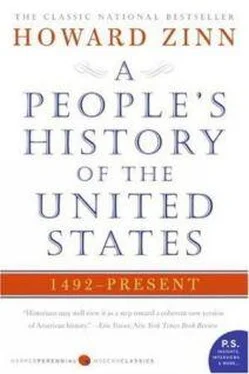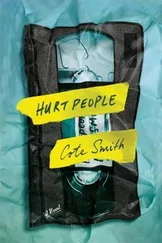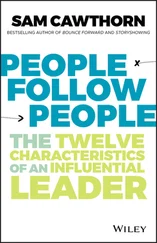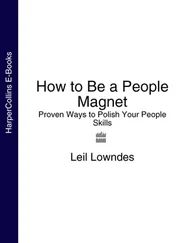Howard Zinn - A People
Здесь есть возможность читать онлайн «Howard Zinn - A People» весь текст электронной книги совершенно бесплатно (целиком полную версию без сокращений). В некоторых случаях можно слушать аудио, скачать через торрент в формате fb2 и присутствует краткое содержание. Издательство: Harper-Collins, Жанр: Фэнтези, на английском языке. Описание произведения, (предисловие) а так же отзывы посетителей доступны на портале библиотеки ЛибКат.
- Название:A People
- Автор:
- Издательство:Harper-Collins
- Жанр:
- Год:неизвестен
- ISBN:нет данных
- Рейтинг книги:4 / 5. Голосов: 1
-
Избранное:Добавить в избранное
- Отзывы:
-
Ваша оценка:
- 80
- 1
- 2
- 3
- 4
- 5
A People: краткое содержание, описание и аннотация
Предлагаем к чтению аннотацию, описание, краткое содержание или предисловие (зависит от того, что написал сам автор книги «A People»). Если вы не нашли необходимую информацию о книге — напишите в комментариях, мы постараемся отыскать её.
A People — читать онлайн бесплатно полную книгу (весь текст) целиком
Ниже представлен текст книги, разбитый по страницам. Система сохранения места последней прочитанной страницы, позволяет с удобством читать онлайн бесплатно книгу «A People», без необходимости каждый раз заново искать на чём Вы остановились. Поставьте закладку, и сможете в любой момент перейти на страницу, на которой закончили чтение.
Интервал:
Закладка:
In North Carolina, a powerful movement of white farmers was organized against wealthy and corrupt officials in the period from 1766 to 1771, exactly those years when, in the cities of the Northeast, agitation was growing against the British, crowding out class issues. The movement in North Carolina was called the Regulator movement, and it consisted, says Marvin L. Michael Kay, a specialist in the history of that movement, of "class-conscious white farmers in the west who attempted to democratize local government in their respective counties." The Regulators referred to themselves as "poor Industrious peasants," as "labourers," "the wretched poor," «oppressed» by "rich and powerful… designing Monsters."
The Regulators saw that a combination of wealth and political power ruled North Carolina, and denounced those officials "whose highest Study is the promotion of their wealth." They resented the tax system, which was especially burdensome on the poor, and the combination of merchants and lawyers who worked in the courts to collect debts from the harassed farmers. In the western counties where the movement developed, only a small percentage of the households had slaves, and 41 percent of these were concentrated, to take one sample western county, in less than 2 percent of the households. The Regulators did not represent servants or slaves, but they did speak for small owners, squatters, and tenants.
A contemporary account of the Regulator movement in Orange County describes the situation:
Thus were the people of Orange insulted by The sheriff, robbed and plundered… neglected and condemned by the Representatives and abused by the Magistracy; obliged to pay Fees regulated only by the Avarice of the officer; obliged to pay a TAX which they believed went to enrich and aggrandize a few, who lorded it over them continually; and from all these Evils they saw no way to escape; for the Men in Power, and Legislation, were the Men whose interest it was to oppress, and make gain of the Labourer.
In that county in the 1760s, the Regulators organized to prevent the collection of taxes, or the confiscation of the property of tax delinquents. Officials said "an absolute Insurrection of a dangerous tendency has broke out in Orange County," and made military plans to suppress it. At one point seven hundred armed farmers forced the release of two arrested Regulator leaders. The Regulators petitioned the government on their grievances in 1768, citing "the unequal chances the poor and the weak have in contentions with the rich and powerful."
In another county, Anson, a local militia colonel complained of "the unparalleled tumults, Insurrections, and Commotions which at present distract this County." At one point a hundred men broke up the proceedings at a county court. But they also tried to elect farmers to the assembly, asserting "that a majority of our assembly is composed of Lawyers, Clerks, and others in Connection with them…" In 1770 there was a large-scale riot in Hillsborough, North Carolina, in which they disrupted a court, forced the judge to flee, beat three lawyers and two merchants, and looted stores.
The result of all this was that the assembly passed some mild reform legislation, but also an act "to prevent riots and tumults," and the governor prepared to crush them militarily. In May of 1771 there was a decisive battle in which several thousand Regulators were defeated by a disciplined army using cannon. Six Regulators were hanged. Kay says that in the three western counties of Orange, Anson, and Rowan, where the Regulator movement was concentrated, it had the support of six thousand to seven thousand men out of a total white taxable population of about eight thousand.
One consequence of this bitter conflict is that only a minority of the people in the Regulator counties seem to have participated as patriots in the Revolutionary War. Most of them probably remained neutral.
Fortunately for the Revolutionary movement, the key battles were being fought in the North, and here, in the cities, the colonial leaders had a divided white population; they could win over the mechanics, who were a kind of middle class, who had a stake in the fight against England, who faced competition from English manufacturers. The biggest problem was to keep the propertyless people, who were unemployed and hungry in the crisis following the French war, under control.
In Boston, the economic grievances of the lowest classes mingled with anger against the British and exploded in mob violence. The leaders of the Independence movement wanted to use that mob energy against England, but also to contain it so that it would not demand too much from them.
When riots against the Stamp Act swept Boston in 1767, they were analyzed by the commander of the British forces in North America, General Thomas Gage, as follows:
The Boston Mob, raised first by the Instigation of Many of the Principal Inhabitants, Allured by Plunder, rose shordy after of their own Accord, attacked, robbed, and destroyed several Houses, and amongst others, mat of the Lieutenant Governor… People then began to be terrified at the Spirit they had raised, to perceive that popular Fury was not to be guided, and each individual feared he might be the next Victim to their Rapacity. The same Fears spread thro' the other Provinces, and there has been as much Pains taken since, to prevent Insurrections, of the People, as before to excite them.
Gage's comment suggests that leaders of the movement against the Stamp Act had instigated crowd action, but then became frightened by the thought that it might be directed against their wealth, too. At this time, the top 10 percent of Boston 's taxpayers held about 66 percent of Boston 's taxable wealth, while the lowest 30 percent of the taxpaying population had no taxable property at all. The propertyless could not vote and so (like blacks, women, Indians) could not participate in town meetings. This included sailors, journeymen, apprentices, servants.
Dirk Hoerder, a student of Boston mob actions in the Revolutionary period, calls the Revolutionary leadership "the Sons of Liberty type drawn from the middling interest and well-to-do merchants… a hesitant leadership," wanting to spur action against Great Britain, yet worrying about maintaining control over the crowds at home.
It took the Stamp Act crisis to make this leadership aware of its dilemma. A political group in Boston called the Loyal Nine-merchants, distillers, shipowners, and master craftsmen who opposed the Stamp Act-organized a procession in August 1765 to protest it. They put fifty master craftsmen at the head, but needed to mobilize shipworkers from the North End and mechanics and apprentices from the South End. Two or three thousand were in the procession (Negroes were excluded). They marched to the home of the stampmaster and burned his effigy. But after the «gentlemen» who organized the demonstration left, the crowd went further and destroyed some of the stampmaster's property. These were, as one of the Loyal Nine said, "amazingly inflamed people." The Loyal Nine seemed taken aback by the direct assault on the wealthy furnishings of the stampmaster.
The rich set up armed patrols. Now a town meeting was called and the same leaders who had planned the demonstration denounced the violence and disavowed the actions of the crowd. As more demonstrations were planned for November 1, 1765, when the Stamp Act was to go into effect, and for Pope's Day, November 5, steps were taken to keep things under control; a dinner was given for certain leaders of the rioters to win them over. And when the Stamp Act was repealed, due to overwhelming resistance, the conservative leaders severed their connections with the rioters. They held annual celebrations of the first anti-Stamp Act demonstration, to which they invited, according to Hoerder, not the rioters but "mainly upper and middle-class Bostonians, who traveled in coaches and carriages to Roxbury or Dorchester for opulent feasts."
Читать дальшеИнтервал:
Закладка:
Похожие книги на «A People»
Представляем Вашему вниманию похожие книги на «A People» списком для выбора. Мы отобрали схожую по названию и смыслу литературу в надежде предоставить читателям больше вариантов отыскать новые, интересные, ещё непрочитанные произведения.
Обсуждение, отзывы о книге «A People» и просто собственные мнения читателей. Оставьте ваши комментарии, напишите, что Вы думаете о произведении, его смысле или главных героях. Укажите что конкретно понравилось, а что нет, и почему Вы так считаете.












